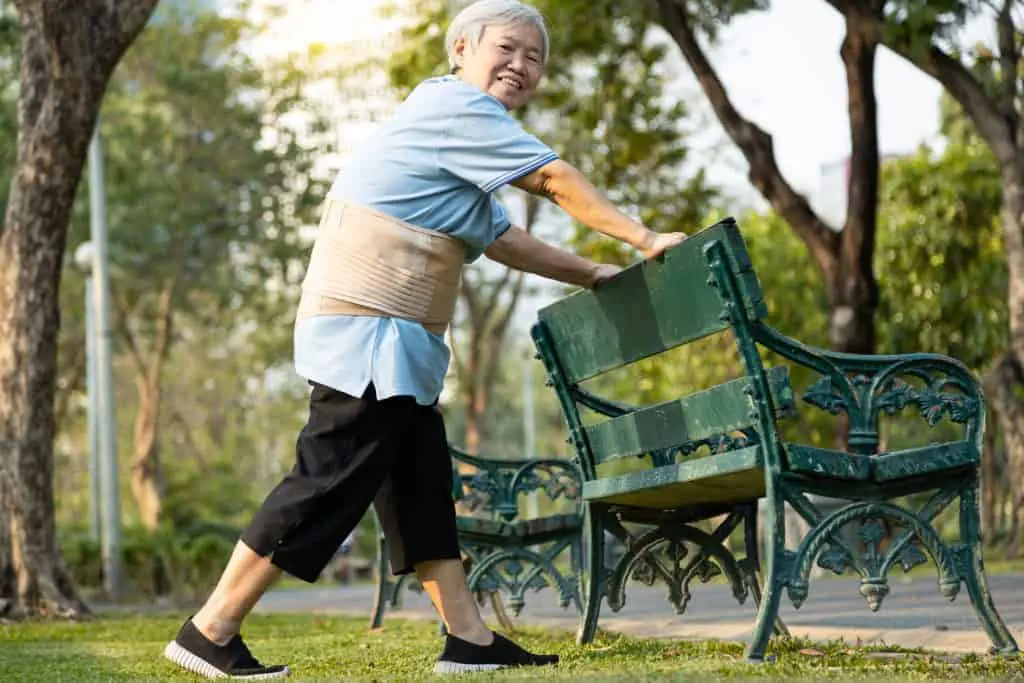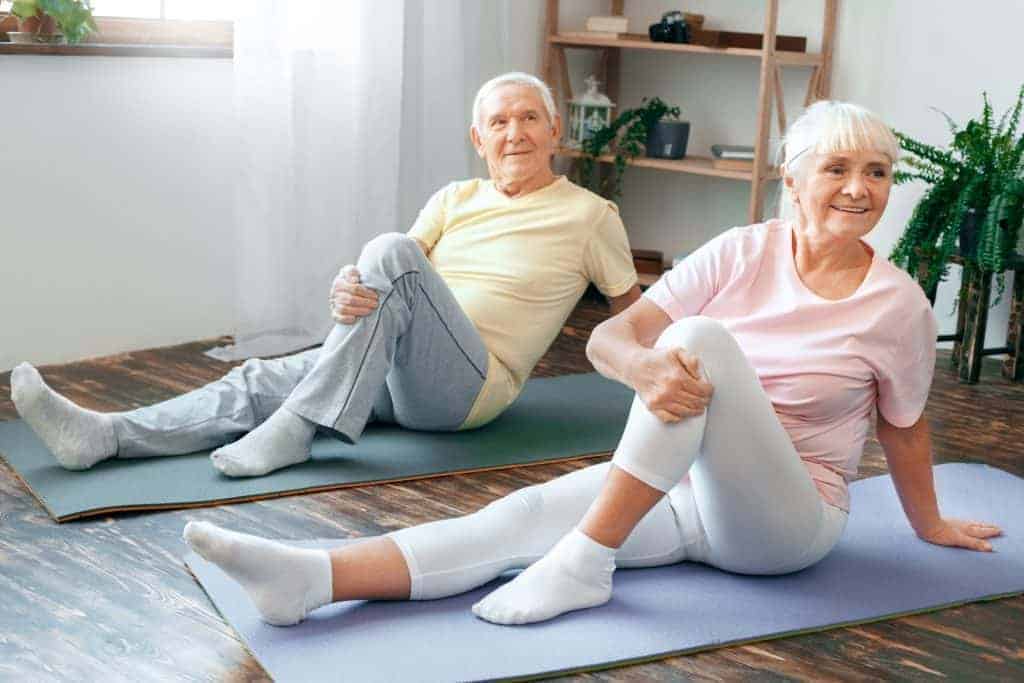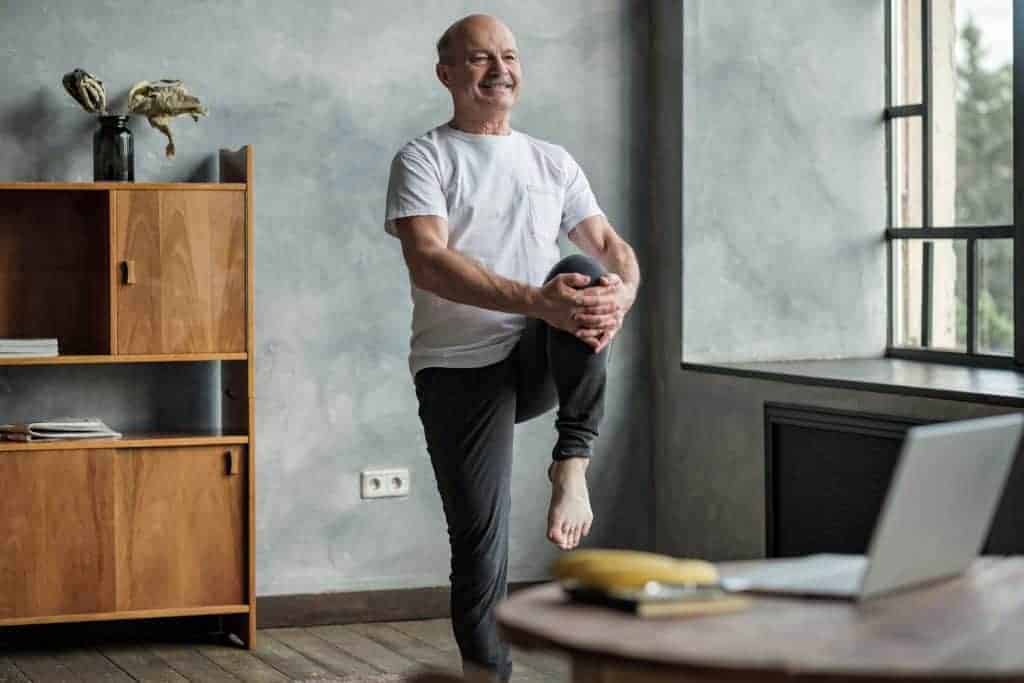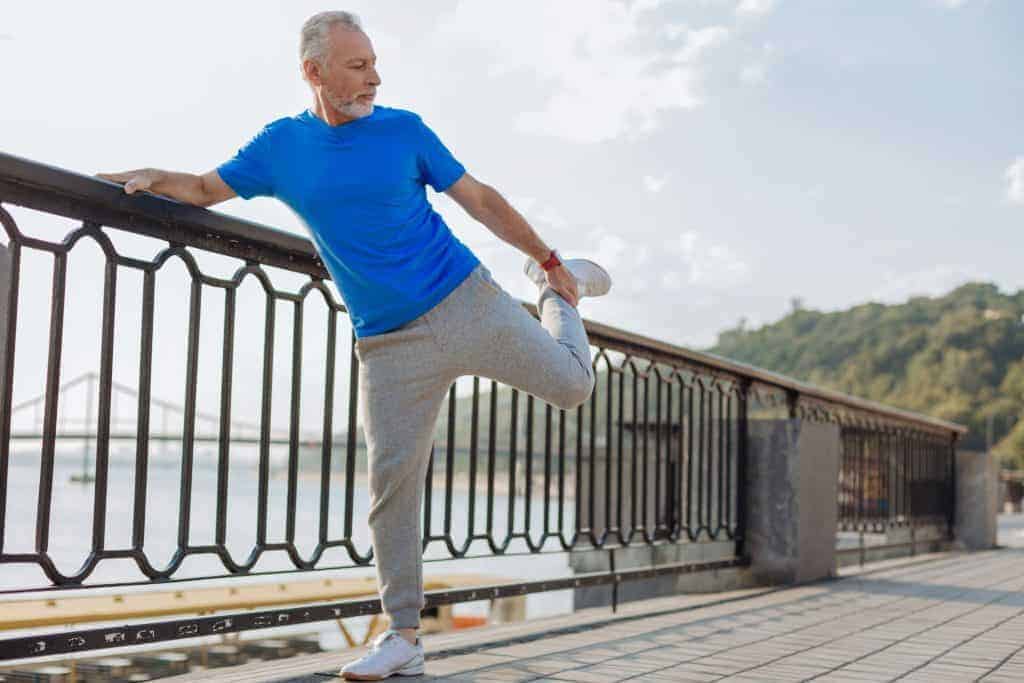This article is evidence-based, verified by Blake Conner, Certified Strength, and Conditioning Specialist .
.
When we are looking at the body as a whole, you can see that there are multiple parts. Each part of the body has a varying amount of muscle mass as well. Where is the most muscle mass held?
Typically, in most individuals, the most muscle mass is found in the legs. The base of the body has the most robust muscle that is located on a human. This makes sense, as we are on them for the majority of our lives. We depend on the legs to get around and move from place to place.
We want this to be true even as we age and become seniors in life. However, issues may arise with age. We may lose some strength in the legs or also lose muscle mass altogether. This is caused by something called sarcopenia, which we will go into later. Regardless, it is crucial at an older age to strengthen the legs. They may not be AS strong as they were when you were younger, but they can be enhanced to a point where life gets a little easier.
In this post, we'll cover:
Why Am I Losing Strength in My Legs (1 )?
)?
Why are you even losing strength in your legs? This is a big question that may arise for some people, especially seniors. Multiple variables cause it, but the phenomena are mainly caused by sarcopenia.
Sarcopenia is the loss of muscle mass. It can happen to people with medical conditions but mainly occurs in the elderly. There are a couple of reasons for this (1 ).
).
First and foremost, there is a complete lack of exercise in this population. As people age, they tend to become less active. This may be due to retirement or a lack of desire to pursue an activity. There is just an overall reduction in muscles being used. So, yes, the idea of using it or lose it applies.
There is a clear difference between individuals who stay active versus the ones who stop altogether. The more active individual will maintain some muscle mass and be less likely to have this decline. However, the process of sarcopenia is literally expedited when one stops being productive. The body will put a focus on the other organs and stop providing energy for the muscles.
What doesn’t get used is somewhat discarded by the human body in a reach to be efficient. This is just one reason for a loss in strength, especially the legs.
When you are younger, the hormones of the human body are incredibly abundant. Growth is natural, and the body is in a very anabolic (growth) phase. However, this can decline as we age. Testosterone levels drop, growth hormone also loses some of its production. With the decrease in these muscle-building hormones, it only makes sense that muscle mass would decrease, therefore, decreasing strength.
As previously stated, the body will remove things that aren’t supported. What supports muscle mass? Protein synthesis. This is taking amino acids and synthesizing them for new proteins that repair and create more muscle mass.
This begins to decline as you age, due to the body slowing down, but also because of a decrease in calories. The primary source of those calories being protein. Seniors tend to reduce their protein consumption in the form of meats, dairy, or even plant-based sources. This could be due to a lack of hunger from medication, trouble chewing or swallowing, or just a lack of the desire to eat as much.
Changes happen to the body with age, but we can avoid losing muscle mass if we focus on consuming more protein. We may not be able to replicate the perfect amount of protein synthesis. Still, we can increase it with higher protein consumption. The body may start to slow down, but we can decrease the rate at which this happens.
A decrease in motor neuron function can also cause strength in the legs to be lost. Motor neurons are what send the signals for us to move. When the ability of these is dampened, it may be harder to produce strength more effectively. Part of the reason that we have power is due to the efficiency that comes about from our nervous system.
The first time that you rode a bike wasn’t as good as the 80th time. This is due to your nervous system adapting.
So, as you can see, there can be multiple ways that you are losing strength in your legs as you age. This may seem like an issue. However, there are ways to mitigate the effect and slow down the process.
How Can I Regain Strength in My Legs?

Regaining your strength is 100% possible. In the same way that you gained it initially, you can achieve it again. It may be a little more challenging or somewhat of a slower process, but all the same, it can be done.
First, we need to start by exercising. This is important for all age groups, but especially seniors. We don’t want to start a decline in health early. This can be avoided by including some exercise routine in your life. It doesn’t have to be anything insane. It can be cycling, Nordic walking, or some strength training. All of which will do a phenomenal job of increasing the strength in your legs.
As mentioned previously, the lack of exercise causes the issue to arise in the first place. All hope won’t be lost. You can start small, maybe some light walking or cycling, and get stronger from there. Any movement will bring about some level of strength. The level of intensity will dictate how much power you gain.
This means that you will get more out of something, such as Nordic walking versus regular walking. You would gain more strength in the legs from strength training versus bodyweight training. The higher stimulus causes more significant changes in the body (2).
Aging brings a lower level of testosterone and growth hormone. These both help to promote mass muscle maintenance, as well as growth. There is a couple of ways in which you could regain strength by increasing your hormone levels.
The first is using the above method. Exercise enhances your hormone production, especially when it’s strength training. The responses that are produced create a form of feedback that signals the hormones even to be created.
You also have the option of seeking medical advice from a doctor for hormone replacement therapy or HRT (3). HRT involves having multiple sessions with a doctor who administers testosterone straight into the system.
Over time, this helps to revamp the body’s testosterone levels artificially. There are speculations over the longer-term effects, so the amount of procedures is sometimes limited.
Protein is vital for the aging population when looking to maintain or even gain more muscle mass. As stated, the amount consumed is often lower than optimal as people age. This can be reversed, and the opposite can be done. So, what is a good range of protein to be consumed? The lowest amount that is recommended is .8g for every pound of body weight.
For example, someone who weighed 100 pounds would need to consume 80g of protein to meet that minimum requirement. However, it is recommended that seniors consume more than that. It is recommended that seniors get closer to 30-35% of their total calories consumed as protein. This is much more than just .8g (4).
Seniors can’t get the same effect from smaller amounts of protein as younger individuals can. They are desensitized to the impact. However, by increasing the amount consumed, you can combat this and regain strength—one thing to add for protein consumption. If you have any renal (kidney) issues, you should avoid a higher intake of protein. Please be sure to ask your doctor if you do have kidney problems about what to do about protein intake.
The nervous system is one way that you can also improve your strength. It may not always have to do with the amount of muscle mass you have, but more so, how efficient your body is. The neurons can be trained to stick around. Our body system may begin to get rid of some, but we can keep what we want by working on it.
Therefore, if you are trying to regain some leg strength, you need to be working on those movements. Even if it is bodyweight, just the everyday practice of making that neuron fire will increase its efficiency.
Just as there are ways in which you can lose your leg strength with age, you can also gain it back. It only takes some work in various areas. However, even if the process may be a little slower, it can be done.
Leg Exercises for Seniors with Bad Knees

That cartilage around the knee can give out as we age. Numerous people have knee issues or are getting close to it as they age. It’s just part of life. They can be worked around, however.
If you have knee issues, you know that impact probably doesn’t feel that great. This may be your number one enemy. Thus, it is going to be useful for you to avoid doing any super-impacting exercises. What has an impact? Jumping, some ranges of motion that put stress on the knee and impact the knee.
Depending on the extent of your knee injury or damage, some things may be easier than others.
Regardless, exercises using machines are going to be your best bet. These lock in a range of motion but also are shallow impact. The best activities will be leg extension, leg press, hamstring curl, and calf raise. All of which will help strengthen the entire leg.
Now, with these exercises, you need to be sure to progress yourself in weight. This is how strength-building works in the first place! It uses a concept called progressive overload, where you are adding strength and mass as time goes on.
Outside of the gym, you have options as well. You can practice Nordic walking due to its low impact and supportive equipment, water aerobics put some emphasis on the legs with no effect, and even some cycling would be great. All of which would work to strengthen your legs also if you have knee issues.
Balance Exercises for Seniors
Balance is something that many seniors can find troublesome. Muscle loss could have occurred, leading to a lack of proper strength in some muscles. So, how can you get it back?
Simple, you need to work on it directly. This can come in the form of SAFELY walking or pushing yourself to work on balance. It is often not a utilized idea to get uncomfortable and try to balance yourself. Maybe you stand on one leg with support to help get the balance down.
As far as actual exercises go, Nordic walking is perfect. You are walking at a more intense pace but have the walking sticks to support yourself. This allows you to be safe and increase the strength in those little muscles. Over time, the balance you once had will come back. Again, this is perfect since the probability of injury is very low.
Leg Strengthening Exercises for Seniors at Home

What if you are stuck at home and have no way to get to the gym? You can still work to strengthen those legs with things around the house.
Bodyweight training has been used for a very long time and can still be utilized today. Even if you have some injuries, you can work around them and modify things.
The best exercises are going to be the squat, glute bridge, and calf raise. The squat can be done with weight or without. Without an external load, you can do this by holding onto something if your balance isn’t the best. If you decide to use something weighted, a backpack with some books in it would be perfect.
You can have it on your back, and it allows you to still hold onto something if you need to. The glute bridge is an excellent exercise for strengthening the posterior legs. If it is possible to get on the ground, this can be done in a lying position. All you have to do is drive your heels into the ground and force your hips into the air.
If getting onto the floor is impractical, you could easily do this on a bed or couch. The calf raise is pretty self-explanatory. You stand, and from there, force your way up onto the balls of your feet and lower yourself back down. This activates the calves and strengthens some small muscles in the legs. If the balance is an issue, feel free to hold onto something as you do this exercise.
Leg Strengthening Exercises FAQs

Does walking strengthen quads?
Yes! Regular walking and even Nordic walking are all great ways to strengthen the quads! If you want to hit the quads even more, then you can focus on walking at an incline.
Are planks safe for seniors?
The plank is an excellent exercise for seniors. There is little to no impact involved, which is always great. It helps to strengthen the core muscles, which are very important for the body to be healthy altogether. The only issue may be getting to the floor. If you find this difficult, then the plank may not be the best option.
How often should seniors lift weights?
Seniors should aim for three to four times a week if looking to lift weights. The amount of protein that you are consuming and your current physical fitness will determine the frequency at which you should go.
Does walking strengthen core muscles?
Core muscles are used when walking. They are being used so long as you are using the appropriate posture. Shoulders should be pulled back and imagine drawing the rib cage down. This will activate the core. It will not be an insane amount of core work versus choosing exercises that engage it directly.
How can I strengthen my core at home?
The core can be strengthened at home with various exercises. These may include movements such as the sit-up, hollow body hold, plank, or side plank. All of which work to stabilize the core in a way that you develop the strength to hold steady. The core muscles play a huge part in everyday life, so you must work to strengthen it (5 ).
).
Benefits Of Nordic Walking For Seniors

Blake Conner is a nutritionist who graduated from Mississippi State University. He is also a Certified Strength and Conditioning Specialist through the NSCA, as well as a certified nutrition coach through Precision Nutrition. Blake runs his own remote nutrition coaching business to help people become the best versions of themselves.
Resources
- https://www.ncbi.nlm.nih.gov/pmc/articles/PMC5127276/

- https://www.ncbi.nlm.nih.gov/pubmed/26302881

- https://www.ncbi.nlm.nih.gov/pubmed/28797374

- https://www.ncbi.nlm.nih.gov/pmc/articles/PMC4924200/

- https://www.ncbi.nlm.nih.gov/pubmed/23568373

